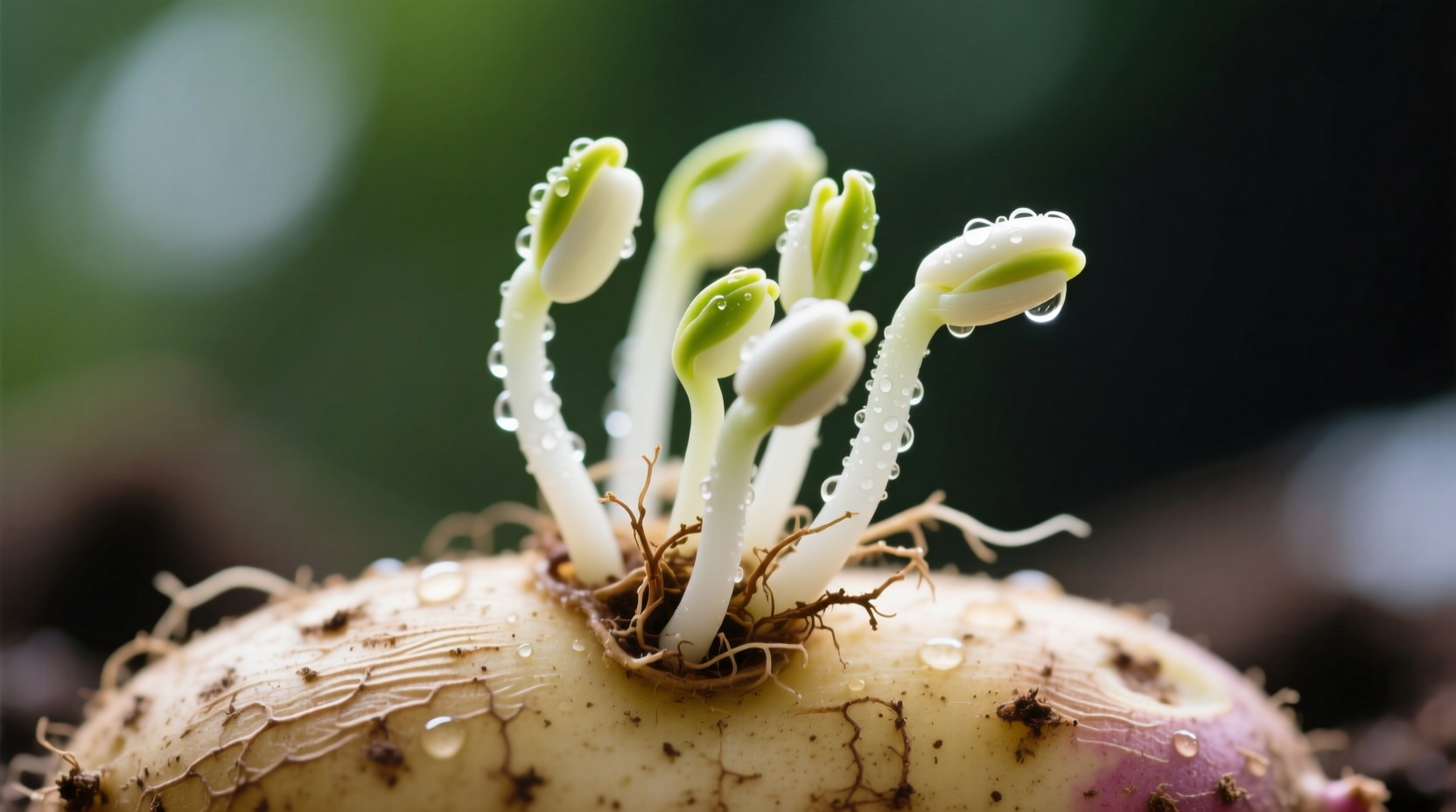Discovering sprouts emerging from your sweet potato doesn't mean it's time to toss it. Many home cooks unnecessarily discard perfectly good produce due to confusion between sweet potatoes and regular potatoes. This comprehensive guide provides science-backed information on safely using sprouted sweet potatoes, proper preparation techniques, and storage methods to extend their shelf life.
Understanding Sweet Potato Sprouting: What's Really Happening
When sweet potatoes begin to sprout, they're simply entering their natural growth cycle. Unlike regular potatoes (which belong to the nightshade family and produce toxic solanine when sprouting), sweet potatoes (Ipomoea batatas) don't generate harmful compounds during sprouting. The sprouts themselves are actually edible and packed with nutrients.
According to the USDA Agricultural Research Service, sweet potato sprouting occurs when storage conditions trigger the tuber's natural growth mechanisms. This process consumes some of the potato's starch reserves to fuel sprout development, which may slightly alter texture but doesn't compromise safety.
When Sprouted Sweet Potatoes Are Safe to Eat
You can safely consume sprouted sweet potatoes if they meet these criteria:
- The sweet potato remains firm to the touch
- No significant soft spots or mushy areas
- No visible mold growth
- No unpleasant odor
- Sprouts are white or light green (not black or slimy)
The edible portion remains safe as long as the tuber maintains its structural integrity. The sprouts themselves are completely edible and actually contain higher concentrations of certain nutrients than the tuber.

Sweet Potato vs. Regular Potato: Critical Differences
| Characteristic | Sweet Potato | Regular Potato |
|---|---|---|
| Family | Convolvulaceae (morning glory) | Solanaceae (nightshade) |
| Sprout toxicity | Non-toxic sprouts | Produces solanine in sprouts |
| Sprout color | White to light green | Green (indicates solanine) |
| Edible sprouts | Yes, nutritious | No, potentially harmful |
| Storage recommendation | Cool, dark, well-ventilated | Cool, dark, dry |
When to Discard Sprouted Sweet Potatoes
While sprouting itself isn't dangerous, certain conditions indicate your sweet potato has spoiled and should be discarded:
- Significant softening or mushiness: If more than 25% of the potato feels soft when gently squeezed
- Dark discoloration: Black or dark brown spots that penetrate beyond the surface
- Mold growth: Any visible fuzzy growth, especially black, green, or white mold
- Unpleasant odor: Sour, fermented, or otherwise off smells
- Excessive sprouting: When sprouts have consumed most of the tuber's mass
The National Center for Home Food Preservation at Kansas State University confirms that sweet potatoes showing these advanced spoilage signs should be discarded to prevent potential foodborne illness.
How to Prepare Sprouted Sweet Potatoes Safely
Follow these steps to safely prepare sprouted sweet potatoes:
- Remove sprouts: Gently twist off sprouts at their base. For stubborn sprouts, use a paring knife to cut them out.
- Inspect thoroughly: Check for soft spots, discoloration, or mold around the sprout areas.
- Cut away compromised areas: Remove any soft or discolored sections with a clean knife.
- Peel if desired: Peeling removes any potential surface contaminants.
- Cook thoroughly: Baking, roasting, or boiling ensures food safety.
For best results, use sprouted sweet potatoes in recipes where texture changes won't be noticeable, such as soups, stews, or mashed preparations. The sprouts themselves can be sautéed or added to salads for a nutrient boost.
Optimal Sweet Potato Storage Timeline
Understanding proper storage extends your sweet potatoes' shelf life significantly. Here's what the Oregon State University Extension Service recommends:
- 0-2 weeks: Ideal condition - firm, full flavor, maximum nutrients
- 2-4 weeks: May begin developing small sprouts - still perfectly safe
- 4-6 weeks: Increased sprouting - check for soft spots before use
- 6+ weeks: Significant sprouting likely - inspect carefully before consumption
Proper storage conditions dramatically affect this timeline. Sweet potatoes stored in ideal conditions often remain usable for 3-5 months.
Preventing Sweet Potato Sprouting: Proven Storage Methods
Extend your sweet potatoes' shelf life with these evidence-based storage techniques:
- Avoid refrigeration: Cold temperatures (below 50°F/10°C) cause internal chilling damage
- Store in a cool, dark place: Ideal temperature range is 55-60°F (13-15°C)
- Ensure proper ventilation: Use mesh bags or baskets instead of plastic
- Keep away from onions: Onions release gases that accelerate sprouting
- Don't wash before storing: Excess moisture promotes spoilage
For long-term storage, the University of California Cooperative Extension recommends curing sweet potatoes at 85-95°F (29-35°C) with 85-90% humidity for 5-7 days after harvest, which significantly extends shelf life.
Nutritional Impact of Sprouting
Sprouting actually enhances certain nutritional aspects of sweet potatoes while slightly reducing others:
- Increased: Certain antioxidants and vitamin C in the sprouts
- Slightly decreased: Starch content (converted to fuel sprout growth)
- Unchanged: Beta-carotene (vitamin A precursor) levels in the tuber
Research published in the Journal of Agricultural and Food Chemistry shows that sprouted sweet potatoes develop higher concentrations of certain beneficial compounds in the sprout tissue, making them potentially more nutritious in specific aspects.
Creative Uses for Sweet Potato Sprouts
Don't discard those sprouts! They're completely edible and nutritious:
- Add young sprouts to salads for a mild, slightly sweet flavor
- Sauté sprouts with garlic as a nutritious side dish
- Blend sprouts into smoothies for added nutrients
- Use as a garnish for soups and main dishes
- Plant sprouts to grow your own sweet potato vine
For gardeners, sweet potato sprouts can be rooted in water and eventually planted to grow new sweet potatoes, providing an excellent opportunity for home cultivation.











 浙公网安备
33010002000092号
浙公网安备
33010002000092号 浙B2-20120091-4
浙B2-20120091-4